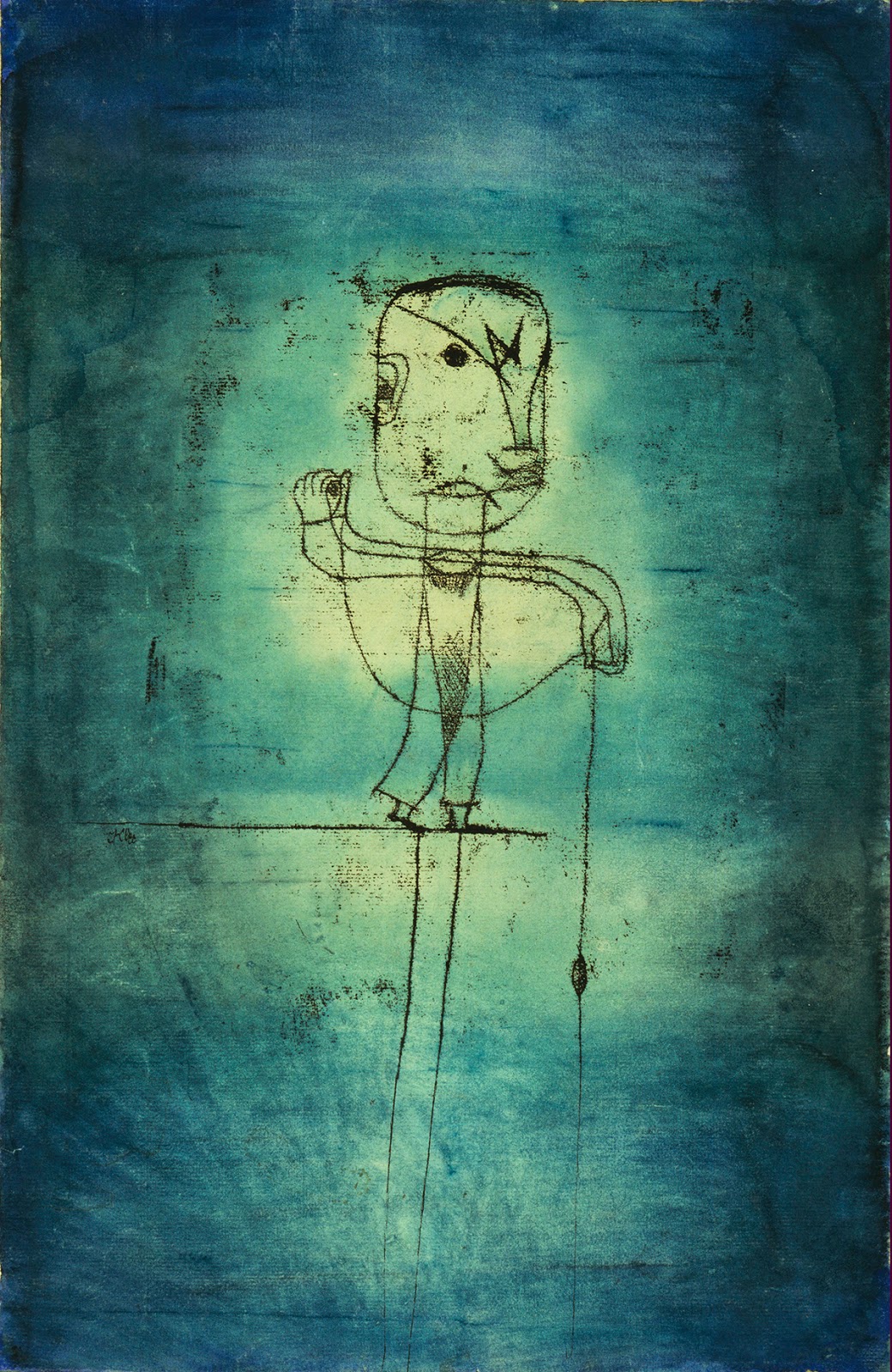I have my own personal connection
with WWII being the grandchild of Holocaust survivors and having had many cousins
and extended family murdered, tortured and imprisoned during the war. Hitler was no stranger in my house and
the very popular exhibition at the Neue Galerie exposes another horrid facet of
the Nazi regime and its evolution of evil. The exhibitions focus is on how the Third Reich used art as
propaganda to influence the public, manipulate power and demonize artists by
dictating what was pure and acceptable in the world of art. The more abstract, simplified, raw or
reduced the figure or landscape; the more pathological and sick the Nazi party
deemed the art and artist. Artist Emil Nolde, a Nazi party sympathizer was labeled
"degenerate" and modern artist Paul Klee was removed from teaching
positions and driven in to exile because of his minimal, abstract paintings that
were compared to the renderings of a child and were considered lacking and deficient.
 |
| Paul Klee, The Angler, Oil transfer drawing, watercolor and ink on paper, 1921 |
 |
| Vasily Kandinksy, Several Circles, Oil Paining 1926 |
Russian painter Vasily Kandinksy is one of my all-time favorite artists and his painting Several Circles was designated (surprisingly) "degenerate" and was on display at the exhibition. Other lesser known household names like Christian Rohlfs and Lasar Seagull were also labeled degenerate art by The Third Reich. To see these imaginative, diverse, rich and colorful artworks displayed together in one space and to witness the attack on Modern Art in Nazi Germany only validates the perverse evil the Nazi's embodied. Put on full display is The Nazi's intolerance and wickedness.
 |
| Christian Rohlfs, The Towers of Soest, Oil and Tempera Painting, 1916 |
 |
Lasar Seagull, Eternal Wanderers, Oil Painting, 1919
|
One room had a powerful display that juxtaposed artworks regarded as acceptable by
the Nazi party on one side of the space, while the other side of the room showcased the
degenerate art labeled by the Nazis. This coupling, in one space, clearly showed
the distinct styles and differences in a blatant compare and contrast. Adolf Ziegler's, The Four Elements, (supposedly one of Hitler's favorite painters) is a triptych of the idealized female nude, reminiscent of the Romanesque woman with clearly "Aryan-like" features that mirrored racial Nazi ideology. The Nazi's liked this kind of art... technically proficient and emotionally flat.
 |
| Adolf Ziegler, The Four Elements, Oil Painting, 1937 |
In the same room, to the right of Ziegler is another triptych by Max Beckmann titled Departure.
 |
| Max Beckmann, Departure, Oil Painting, 1933-35 |
According
to the Museum of Modern Art, "...the elaborate narrative juxtaposes
scenes of sin and salvation, but what
makes the painting modern is the deliberate ambiguity of its
iconography." The style of Beckmann's painting is raw and edgy with black,
bold outlines and simplified forms and features that lend itself to the
violent and emotional. This was rejected by The Nazi's and eventually Beckmann was fired from his professorship by the Nazi's and moved in to exile to The Netherlands.
Check out this engaging exhibition... The Neue Galerie is located at 1048 5th Ave, New York, NY and runs from
March 13-June 30, 2014
Photographs are not allowed at the exhibition and the images included in this blog post were taken/sourced/found on the Internet.

No comments:
Post a Comment